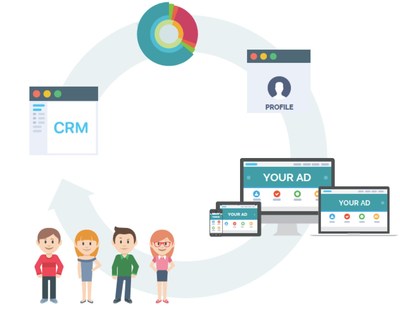
Today’s marketing is all about putting the customer at the center, and providing a customer experience that is better than your competitors. We have moved from channel-centric marketing to one that is based on the customer and their experience. The emphasis and budget should no longer be on which channel is performing best, rather, it should focus on optimizing the customer journey to make it easier to make purchases and interact with your brand.
This is easier said than done. One major challenge that brands face is eliminating data silos to have a complete view of your customer and the customer journey. How can you connect your online data to your offline data, to your email data, to your mobile data, to your call center data? It can be overwhelming, but it can be taken step by step. Start by connecting just two data streams into one Customer Profile, and expand your view of the customer from there.
In an increasingly digital world, many brands are using online strategies, such as programmatic advertising and website personalization. These brands should be connecting their online data with their in-store data to see the impact of their marketing efforts.
- Majority of sales still happen offline – Only 15% of a brand’s revenue is driven through online sales. With the increasing number of UPS and Fedex packages, and the Amazon monopoly, this can be hard to believe. Customers are still shopping online, doing price comparisons and searching for deals, but 85% are still ultimately making that purchase in-store. By combining online and offline data, brands can see the path to purchase. They can see acquisition and clickstream, and they can see how long it took from online acquisition to making a purchase.
- If someone purchases in-store, the program failed from digital view of the world. – Brands put a lot of effort and budget into their digital marketing. Imagine a customer clicked through a digital ad to your website, searched around, and placed something in the online cart. Then, they closed out and never went back to their cart. From a siloed digital marketing point of view, that ad has drawn no revenue from this customer. What you don’t know is that customer has purchased that exact item in your store, in addition to several other items. So, that advertisement has actually generated more revenue than just the one item, and should be considered a success. By combining your online and offline data, the digital marketing will start to see more successes.
- Frustrating from customer point of view when you’re still tracking them with the same offer. –Imagine you are a customer shopping online. You find a sweater, put it in your cart, then something else comes up and you forget about it. Later that day, you go shopping in-store, see the exact sweater in the color and size you want, and decide to purchase it there. The sweater is still in your digital shopping cart, but you have the real thing in your hand. You go home, and for the next six weeks, you see advertisements for the sweater everywhere you go. Because the brand’s online and offline data isn’t connected, they think you haven’t bought the sweater, and come off as disjointed and overbearing.
- Combine online and offline to provide as much intelligence to your marketing as possible.
Although we live in a world that blends online and in-store shopping, most multichannel brands have customers that only shop online, and customers that only shop in-store. When your data is siloed, it’s difficult to see a complete view of who your customer base is. Going down to the customer level, it’s difficult to track a customer’s path to purchase in-store when part of that path is online. By combining online and offline data, attribution will become more clear and you can put your budget towards optimizing the path that creates the most return on investment.
- Customers ultimately migrate to brands that do it right. So many brands are talking to your customers every day. Some of them are on the way to a continuous conversation that spans across all channels, and others are still disjointed and create a frustrating experience for the customer. Going back to our example above, would you continue shopping with the brand that continues to spam you with irrelevant ads and seems to be not listening to your needs? Customers are demanding more seamless customer experiences that continue across channels, and they will ultimately shop to the brands that do it right.
CP recently created Perfect Pixel, an online data collector that connects a customer’s digital ID to their CRM profile. As customers click through a digital ad or email, their digital activity is collected and connected to the CRM identity, allowing Perfect Pixel to deliver the intelligence to create targeted communications and measure online sales attribution.
With Perfect Pixel, we help brands gain a full 360-view of their customers. Brands can take the guesswork out of marketing attribution and how to allocate marketing dollars, connect the dots across digital channels to get true understanding of real behavior and the revenue impact of each interaction, and control their own data. If you’re interested in learning more about how Perfect Pixel can help your business combine online and offline data, please contact us!



